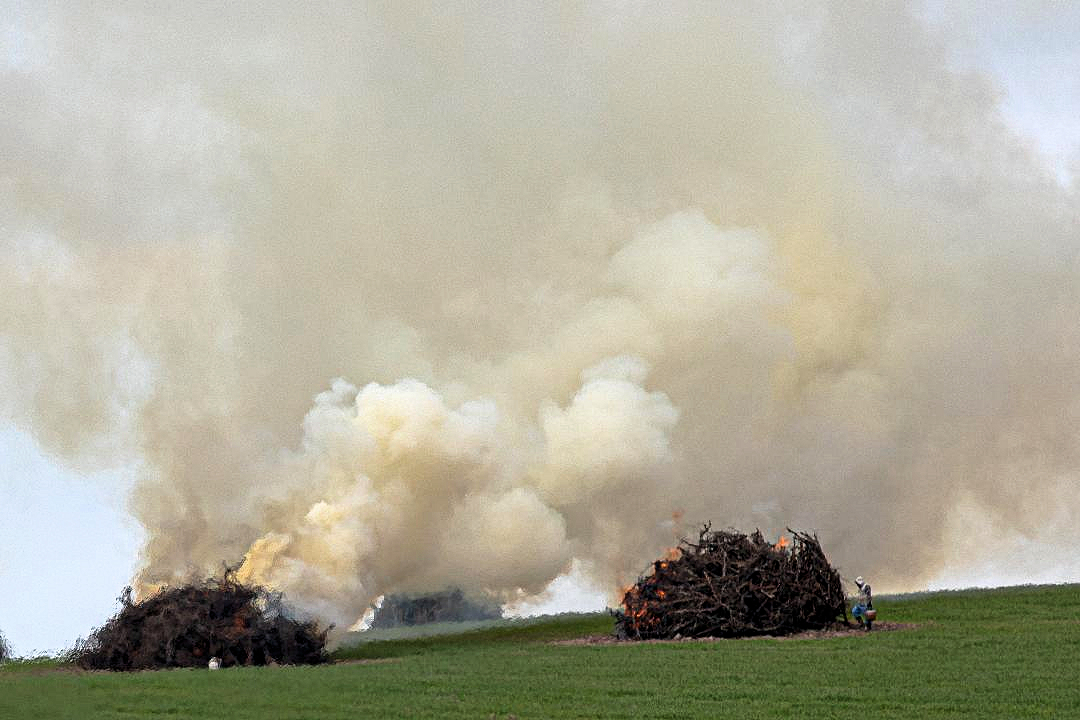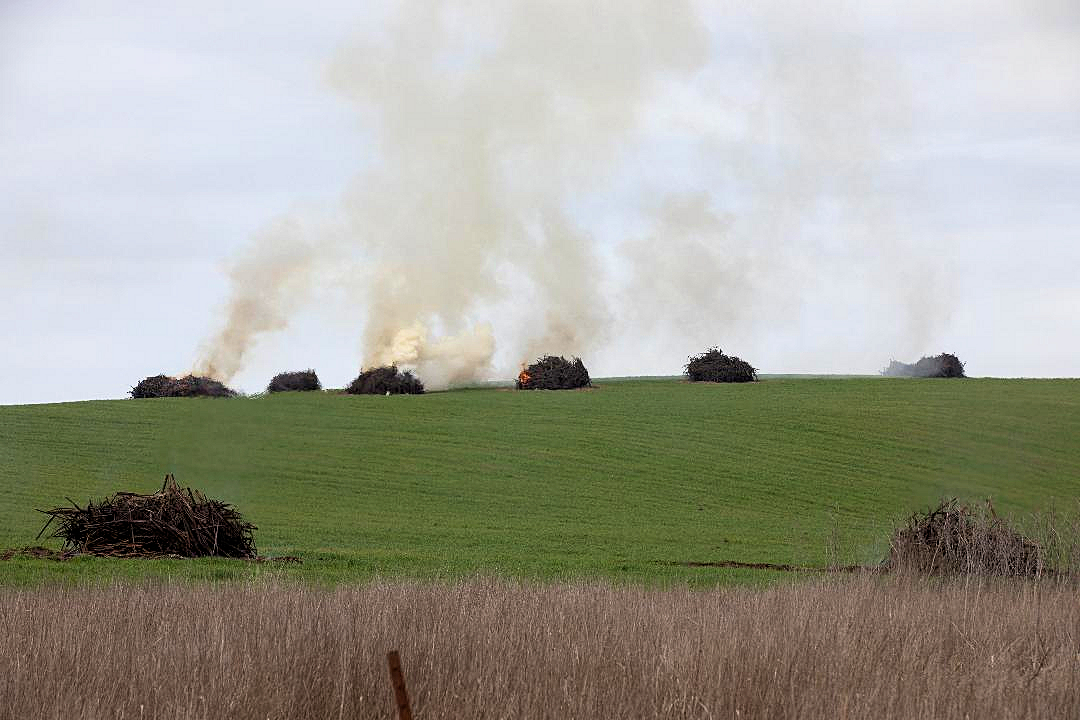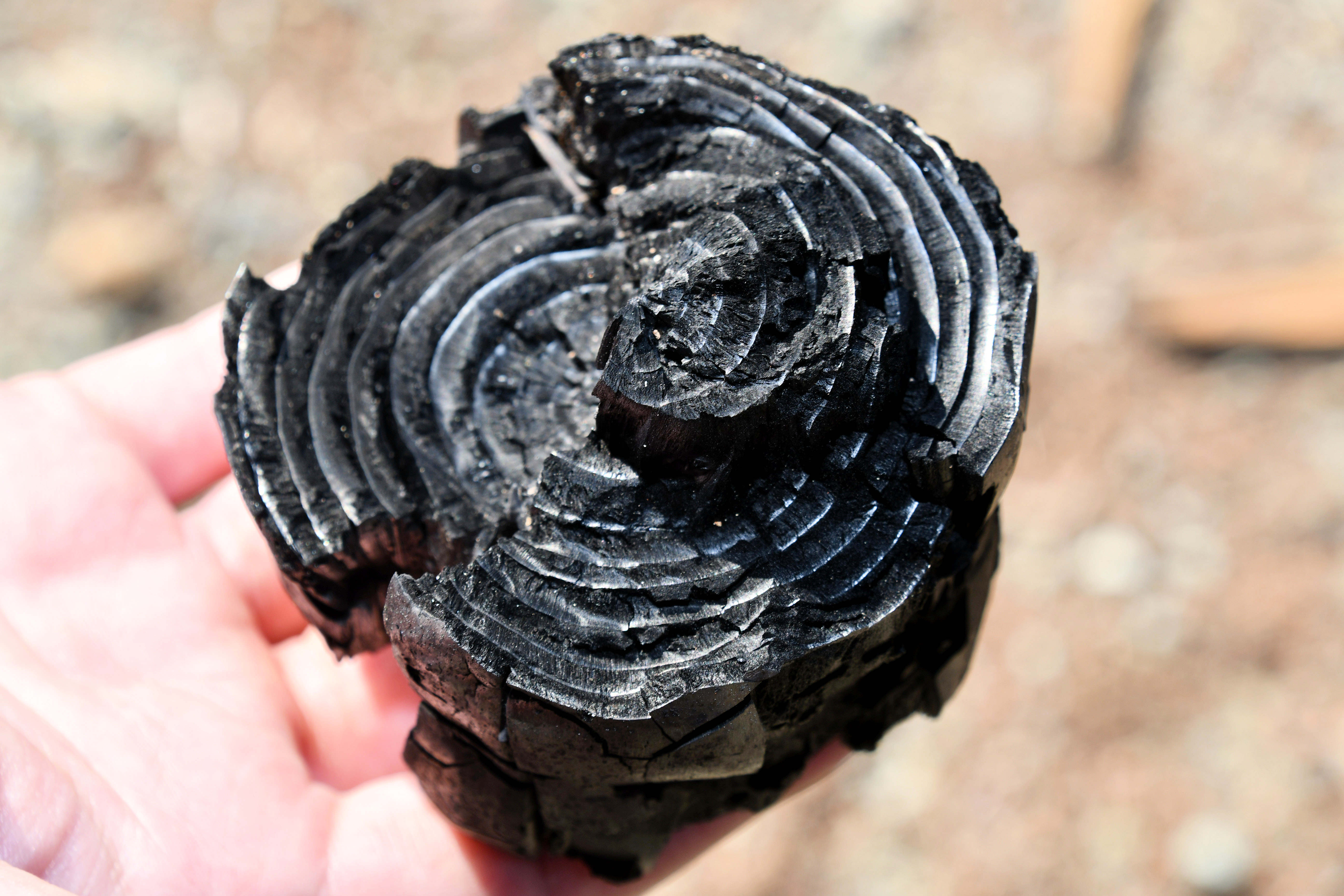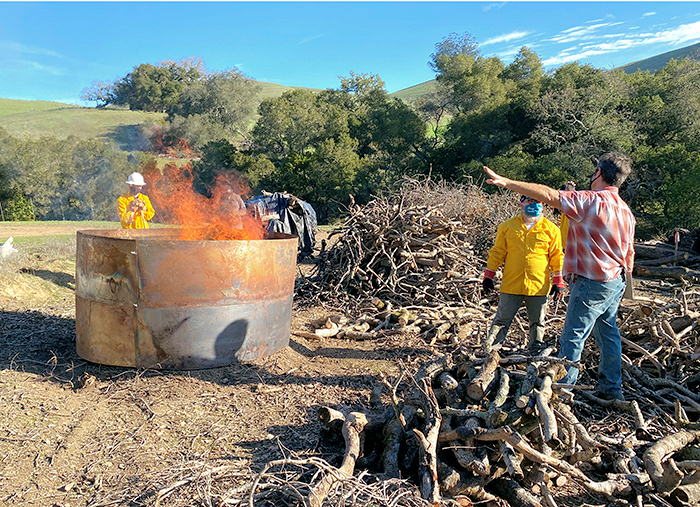 It’s noon on a cool dry February day, and the air is inexplicably hazy. People report their asthma acting up. It feels more like Los Angeles than the idyllic Napa Valley. Then, the sources of the smoky air are noticed. A bonfire here and there and a chain of bonfires on larger properties. Vineyards that have been ripped up are being burned. Photo credit: Roland Dumas
It’s noon on a cool dry February day, and the air is inexplicably hazy. People report their asthma acting up. It feels more like Los Angeles than the idyllic Napa Valley. Then, the sources of the smoky air are noticed. A bonfire here and there and a chain of bonfires on larger properties. Vineyards that have been ripped up are being burned. Photo credit: Roland Dumas
When a vineyard is slated for replacement, the vines are pulled up and put into a pile, dried, and then burned. It’s the traditional way to dispose of the woody vines, and it’s the cheapest. That is, it’s the cheapest to the vineyard owner. There are external costs paid by others, including the impact on global warming and the downwind health costs that accrue to workers and neighbors.
Still, why does this archaic practice continue? Don’t vineyard owners know they are pumping carbon into the atmosphere? Don’t they know that they are impairing the health of residents and tourists? Don’t they know that reducing climate change is everyone’s responsibility?
 The Napa Sierra Club Conservation Committee looked into this practice, along with other carbon release practices in winegrowing and the overall carbon footprint of winemaking. We were troubled by what we found, and troubled that only a few winegrowers are actively tracking and reducing their carbon footprints. Photo credit: Roland Dumas
The Napa Sierra Club Conservation Committee looked into this practice, along with other carbon release practices in winegrowing and the overall carbon footprint of winemaking. We were troubled by what we found, and troubled that only a few winegrowers are actively tracking and reducing their carbon footprints. Photo credit: Roland Dumas
The release of carbon into the atmosphere has both health and climate adverse impacts. Inhaling these smoke particles has immediate respiratory effects as well as long term cumulative impact on health. In 2003, the state legislature passed an ordinance that would eliminate ag burning in the Central Valley; The California Air Resources Control Board has stepped in to enforce that regulation and eliminate agricultural burning by 2025.
Napa is much smaller than the central valley, but the impact of vineyard burning is the same. It triggers asthma and other breathing problems, and puts black carbon particles into the atmosphere along with global warming CO2. Even recent efforts to reduce the worst of the black carbon emissions are insufficient. Sequestered carbon is being released into the atmosphere in a combination of CO2 and particles of varying size. We need to develop and adopt practices that reduce the total carbon released, not just the most visible. As we approach the critical point in trying to contain global warming, everyone needs to do everything in their power to eliminate carbon emissions. We can no longer point at larger contributors; we have to do everything in our own domain to contribute to solutions.
 We reviewed various alternatives to vineyard burning for practicality and reduction of carbon release. Though all are better than open burns, we find that the most promising approach is what is called “conservation burning.” In conservation burning, the vine wood is put into small piles, often within some kind of containment vessel. When the fire has caught, it is deprived of oxygen, which prevents complete burning of the wood. The fire is extinguished with water, leaving charcoal. The particular form of charcoal is called biochar because it retains the form of the original wood, is made of carbon, and is porous. There are reports that conservation burning turns up to 50% of the woody material into biochar, instead of going into the atmosphere as carbon dioxide and sooty smoke.
We reviewed various alternatives to vineyard burning for practicality and reduction of carbon release. Though all are better than open burns, we find that the most promising approach is what is called “conservation burning.” In conservation burning, the vine wood is put into small piles, often within some kind of containment vessel. When the fire has caught, it is deprived of oxygen, which prevents complete burning of the wood. The fire is extinguished with water, leaving charcoal. The particular form of charcoal is called biochar because it retains the form of the original wood, is made of carbon, and is porous. There are reports that conservation burning turns up to 50% of the woody material into biochar, instead of going into the atmosphere as carbon dioxide and sooty smoke.
Biochar is buried in agricultural land and provides significant benefits to crops and doesn’t compost and release the carbon into the atmosphere. This method is still in its early stages and is subject to experiments and alternative procedures, but has significant promise as a solution. It is expensive relative to open burning, but we expect the cost to come down as experience increases and regulatory agencies adjust rules to make it more efficient. Photo from USGS.
 We will vigorously support Napa Green’s inclusion of conservation burning as part of the sustainability program, and will advocate for cooperation of regulatory bodies to flex rules that may impede implementation of this method. We request that our Agricultural Commissioner and the Board of Supervisors take this up, and develop their own advocacy for elimination of agricultural burns, as the Central Valley has.
We will vigorously support Napa Green’s inclusion of conservation burning as part of the sustainability program, and will advocate for cooperation of regulatory bodies to flex rules that may impede implementation of this method. We request that our Agricultural Commissioner and the Board of Supervisors take this up, and develop their own advocacy for elimination of agricultural burns, as the Central Valley has.
Napa wine country projects an image, both in place and in products. Words like purity, clarity, natural, organic, and green are commonly employed to describe the expensive products that are made here. The visitor experience is of clean, green, fresh, and scenic landscapes. By current practice, carbon dioxide, smoke, and soot are also products of Napa winegrowing. We encourage winegrowers to bring the practice in line with the customer expectation and the brand image of Napa wines. Photo from the Sonoma Biochar Initiative.org
Read more:
https://www.sciencedirect.com/science/article/abs/pii/S016788091400543X?via%3Dihub
https://sonomabiocharinitiative.org/